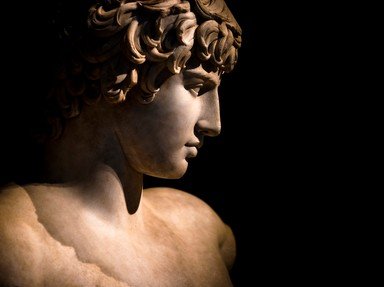Quiz Answer Key and Fun Facts
1. Though Greek mythology may not be immediately associated with dragons, dragon-like creatures appear in quite a few myths. The Oracle of Delphi was originally guarded by a monstrous serpent, called Python. Which god claimed the shrine after having killed the monster with his bow and arrows?
2. These winged creatures, whose name meant "the snatchers", and who were said to represent the storm winds, were often sent by Zeus to harass people he wished to punish for some misdeed.
3. What was the name of the man-eating, one-eyed giant, son of Poseidon, encountered by Odysseus (Ulysses) in a memorable episode of Homer's "Odyssey"?
4. In Ancient Greece, you had to be very careful not to offend the gods. Which hunting Olympian deity sent a gigantic boar to ravage the countryside when the king of Calydon forgot to sacrifice to him/her?
5. Before he embarked on the last of his labours, Heracles sought the guidance of the goddess Demeter and her daughter Persephone to learn how to enter and exit the underworld. What did the task entail?
6. Who was the hero who slew a dragon - a son of Ares, the god of war - prior to founding the city of Thebes?
7. The goddess Hera was notorious for her jealousy against her husband Zeus' many human lovers. Which of these ladies was turned into a white heifer, and put under the custody of Argus, a giant with one hundred eyes?
8. Under which fiery mountain (also said to be the place where the god Hephaestus' forge was located) was the snake-legged giant Typhon imprisoned by Zeus after a fierce battle?
9. Which Olympian deity bore the severed head of the Gorgon Medusa (killed by the hero Perseus) on his/her shield?
10. You may be surprised to learn that the terrifying Erinyes (or Furies) had something in common with Aphrodite, the ravishing goddess of love and beauty. They were born from an act of violence against which primordial sky god?
Source: Author
LadyNym
This quiz was reviewed by FunTrivia editor
agony before going online.
Any errors found in FunTrivia content are routinely corrected through our feedback system.


